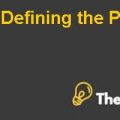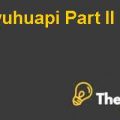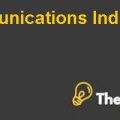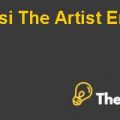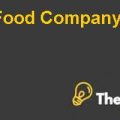
Company Background:
Unilever is formed by the merger between the Dutch and British companies. The company came into existence in 1930 by the merger of two companies named as Margarine Unie with Lever brothers. These companies were at the same level and competing for the similar raw materials used in the production. In addition to that, both the companies were engaged in marketing of household products on a large-scale. Furthermore, both the companies use similar distribution channels for the placement of products. On one hand, Margarine Unie was taking steps forward to grow through mergers and acquisitions of other companies with the same product throughout the 1920s. On the other hand, Lever Brothers were engaged in establishing various soap factories around the globe. By the end of 1917, the company started to diversify into other products like ice-cream, foods, fish acquiring and packaged canned food businesses.
By the end of the 1930s, Unilever shifted its focus towards advancement and initiated various technologies in the business. With these efforts, the business of the company flourishes and the company successfully launched its businesses in various countries and regions specifically in Latin America. The entrepreneurial spirit that has been delving into the company culture by the founders are now being practiced by the organization today. At the end of 1930s, both the companies started operating as one single unit and merged its entire business activities. As now, the corporate centers of the company are located in Rotterdam and London (Beck & Earnest, 1999).
Introduction:
As mentioned above, Unilever is a Dutch-Anglo multinational company for consumer products that is based in London and The Netherlands. The main products of the company include beverages, food, personal care and cleaning agents and detergent products. The company is known to be the third largest company in terms of consumer goods followed by P&G and Nestle. In addition to that, the company is said to be one of the oldest multinational companies along with its presence in more than 190 countries. The company has segmented into four primary segments, i.e. Home care products, Food products, Refreshments and Personal Care products. Furthermore, the company has its R&D facilities in various countries like the Netherlands, United Kingdom, United States and China.
In addition to that, the company is committed to meet the requirements of individual customers on a daily basis. The company has hundreds of products that have been chosen by thousands of customers worldwide on a daily basis. The prime task of the company includes earning consumer’s trust, foreseeing their expectations from the products and handling their daily needs. The company is committed to bring the mixture of local and global expertise to provide best service to the customers.
The company is engaged in providing top quality products to their customers for more than 70 years. The overall product portfolio of the company is highly diverse and is based on a mixture of local, global and regional brands. Examples include Dove, Lux, Bertolli, Magnum, Lipton and Vaseline is some of the most popular brands of Unilever worldwide. With the changing requirement and needs of the customers, the company is prompt to respond to the needs and wants of the customers. The company is also willing to anticipate the future needs and demands of the consumers as well. In addition to that, the company is making efforts to strengthen the understanding of cultural differences in an international arena. Furthermore, the company is highly committed to providing top quality brands by investing heavily in Research and Development (Collins & Glenn 1996).
Vision statement:
“The vision of the company is to make people look good, feel good and bring maximum from their lives”
This can be done by providing goods and services that are good for them and for their surroundings as well. The company is committed to engage people in doing little things that can add big difference globally. The company is also engaged in doing business in such a way that will add value to the business and increase the size of the company. The company is developing new ways through which it would be able to reduce the negative impact of the company towards the environment.
The company believes it is the brand that has a power to change consumer’s lifestyles and living standards. The responsibilities of the company are growing with the growth in business. Further, the company has realized the importance of change in climate and its impact on the lifestyle of individuals.
Mission statement:
“The mission of the company includes adding vitality to life. The company is aiming to meet the daily needs of customers about their hygiene; nutrition and personal care with the help of the products offered by Unilever that in turn help individuals to look and feel better.”
The company has penetrated its roots in regional and local ethnicity and cultures......................
This is just a sample partial case solution. Please place the order on the website to order your own originally done case solution.
The case illustrates the development of new environmental initiatives and its implementation in the corporate policies of major international corporations. Jan-Kees Vis, staff worker in middle echelons of the company, is trying to integrate sustainable development into the existing environmental policy in the hope of providing a plan of action for achieving sustainable development. Once the new policy is adopted, the case leaves the student to decide how the company should proceed with the implementation of their obligations. See also B, C, D and cases (E-0154, E-0155, E-0156) and "Unilever: Corporate Venturing and Environmental Sustainability (A)" (E-0152). Education information is available only to registered faculty. "Hide
by Patricia H Werhane,, Michael E. Gorman, Myles Standish Source: Darden School of Business 8 pages. Publication Date: December 16, 1998. Prod. #: UV1863-PDF-ENG

